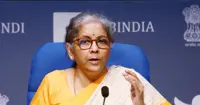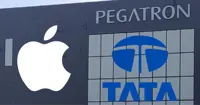Government sets aside Rs540 crore as subsidy for rural electrification scheme
24 Jun 2009
The government has set aside Rs540 crore for its flagship programme - Rajiv Gandhi Grameen Vidyutikaran Yojana - for providing subsidy for electrification of hamlets and habitations that are not being covered under the scheme.
The government has targeted to electrify 1.15 lakh villages and provide free electricity to 2.34 crore households that come under the `below poverty line' (BPL) category, under the RGGVY.
The government's flagship programme, the Rajiv Gandhi Grameen Vidyutikaran Yojana has helped to electrify 62,000 villages and provide free connections to 6 million households that are below poverty line (BPL).
The power ministry has developed a tentative framework for operationalising decentralised distributed generation (DDG) projects, which would also give a boost to development of renewable power projects.
The scheme would ensure that energy needs of remote villages and hamlets are met through scaleable, replicable and technologically and financially efficient models.
The DDG scheme is a sub component of RGGVY and aims at utilising suitable technologies which are locally available for generation of electricity and distributing the same in the nearby hamlets / habitations.
Decentralised developers could either be state agencies, private sector developers, NGOs and other institutions. Under the programme, potential energy developers will be allowed to set up DDG projects that are transparent and technically and economically efficient.
"By nature, such projects rely more on small hydro and renewables. The government plans to help these smaller projects to scale up operations and operate at a larger scale by proving technical and economical viability of the implementation models.
The power ministry has come out with transparent set of guidelines, standardised format for preparation of DDG projects and guidelines for procurement of goods and services for implementation for rural electrification projects under DDG.
The scheme aims to identify such developers, who will be able to meet the village/hamlet electricity requirements on a sustainable basis for a minimum period of 5 years and the selection of the developers will be on the basis of least viability gap funding.































